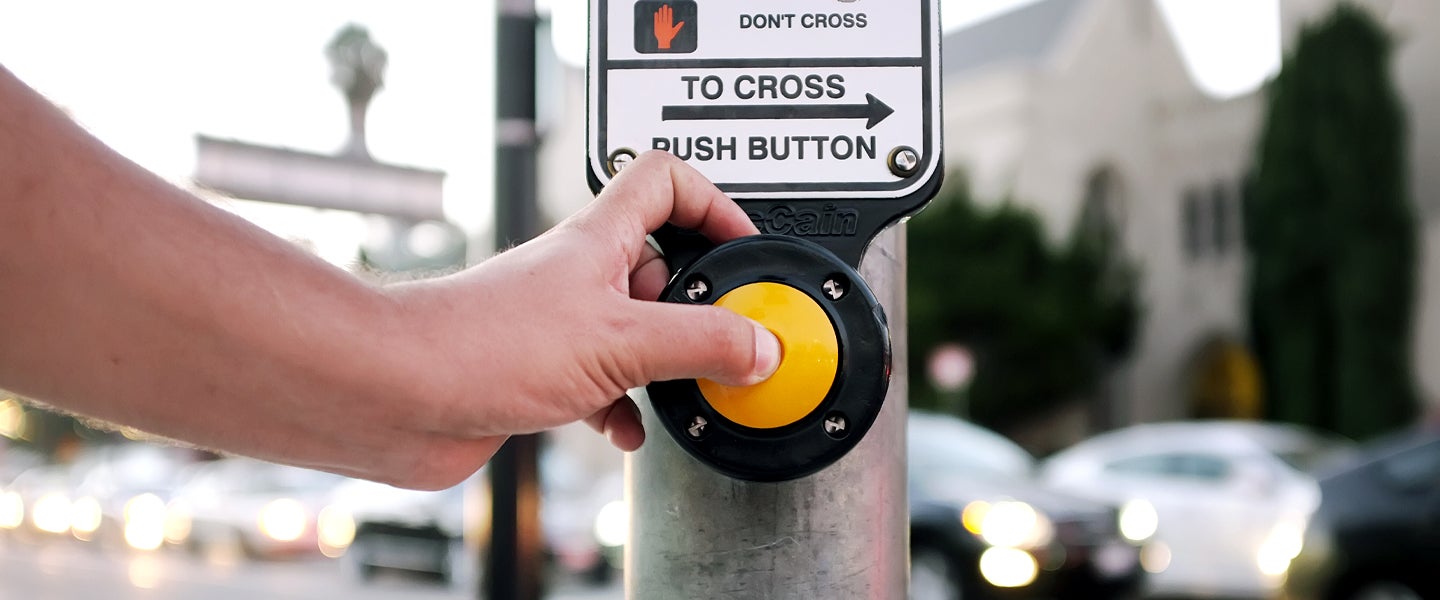One would expect that bashing the crosswalk button like a Bop It produces actual results, especially since the city went to the trouble of installing them. But much like how colleges promised millennials a life of financial stability and instead gave them one of constant debts and worthless degrees, most crosswalk buttons advertise a quicker WALK signal, then provide nothing at all.
The lie stretches all the way back to the 1970s, when computerized traffic signals emerged in New York, and the city deactivated most of the crosswalk buttons. As the New York Times reported in 2004, more than 2,500 of the 3,250 crosswalk buttons in the city existed as placebos, rewarding pedestrians with an illusion of control in the hope that some mindless button pressing would quell their antsy impatience. It’s gotten even worse since then — by 2016, only 120 crosswalk buttons in New York City actually prompted the WALK signal.
This isn’t an isolated situation, either: False crosswalk buttons are an epidemic across the U.S. In 2014, ABC News reported that every crosswalk button in downtown Dallas was disabled. In 2017, the Boston Globe informed the public that most of the crosswalk buttons in their city do absolutely nothing — and the list goes on (and on and on).
There are, however, some crosswalk signals sprinkled around the country that work, but mostly only when city officials want them to. For instance, in downtown Boston, the crosswalk signals act as placebos during high-traffic times, but they work in the early mornings and late nights. In these cases, the button sends a signal that prompts the WALK signal and ensures that you have enough time to get across the street when your turn comes. Either way, don’t get impatient. Because even when they do work, your masterful bongo playing on the button doesn’t help things along any more than a single push. “Pushing the button multiple times doesn’t change anything,” writes traffic operations engineer Glenn Blackwelder. “Signal controllers register the pedestrian call with the first push.”
Sure, I feel manipulated and possibly a little stupid. But there are several good reasons why these defective buttons remain in place, the first being that removing them would be super expensive — in New York City alone, dismantling the placebo buttons would cost an estimated $1 million. Plus, with new and improved computerized signals that efficiently control the flow of traffic, allowing any one person to manipulate that cycle with the push of a button could result in congested chaos and enraged drivers bashing button-happy pedestrians over the head.
Psychologically speaking, researchers suggest that these placebo buttons also prevent pedestrians from crossing the crosswalk before the WALK signal appears, since people are more inclined to follow directions when they feel like their input is being taken into consideration (of course, this no longer applies when you have your eyes opened to the false control that these buttons provide). There’s also the slight satisfaction that pushing these buttons gives us. “Perceived control is very important,” psychology professor Ellen Langer told the New York Times when asked about crosswalk buttons. “It diminishes stress and promotes well being.”
All of which, I suppose, is good and fine, since, no matter how many germs are living on them, there’s just something about those big yellow buttons that makes me NEED to push them.

